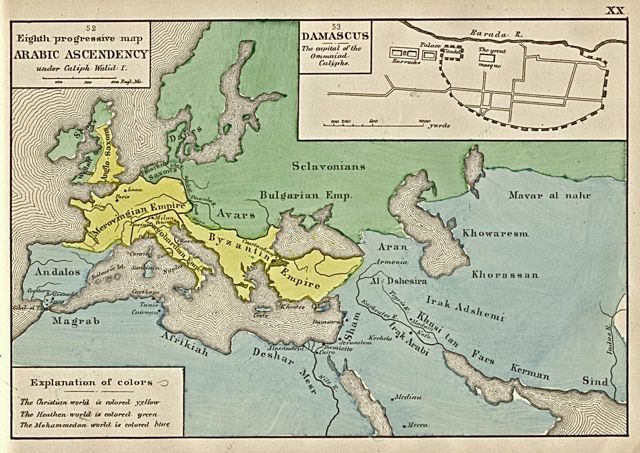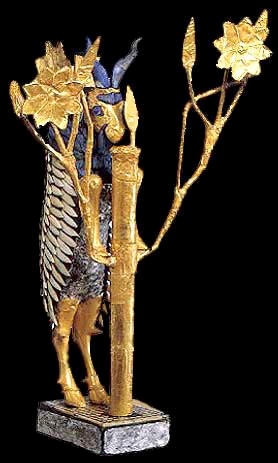Curious Maps: The Eighth Progressive Map- Arabic Ascendancy Under Caliph Walid I

"The Eighth Progressive Map: Arabic Ascendency"; From "An Historical Atlas Containing a Chronological Series of One Hundred and Four Maps, at Successive Periods, from the Dawn of History to the Present Day." by Robert H. Labberton. Sixth Edition. 1884.
http://www.lib.utexas.edu/maps/historical/history%5Fmiddle%5Feast.html
This map illustrates the immense territorial expansion of the Islamic Empire that took place under Al-Walid I, who ruled from 705-715 C.E. during the Umayyad Caliphate. This period is often considered to be the “Arab Golden Age” and this assertion is certainly true from the standpoint of geographical extent; even the Ottoman Empire did not equal the Umayyad Caliphate in size.
Thus, we are given a view of the geo-political power dynamics of the early eighth century. With Europe hedged in by the heathen “other” to the North, and the world of the “Mohammedan” in every other direction, this map solidifies the notion of a Christian Europe versus the Islamic East. In this way, this map anticipates both the Crusades and the subsequent rise of the Ottomans, which in large part define the religious framework of Europe’s Middle Ages.
Interestingly, this map thoroughly demonstrates the stereotypical homogenization of the East, as the ubiquity of the “Arab Empire” obscures the representation of all other religions and cultures in this diverse region. Such oversimplification is emphasized by the contrasting indication of not one but four Christian empires: Anglo-Saxon, Merovingian, Longobardian and Byzantine. Hence, “The Eighth Progressive Map” entirely predates the 19th century tendency toward Orientalizing, in which there is an interest in the Near East as “the cradle of civilization” and thus a somewhat more academic understanding of the varied cultures and religions of the area.
Presentation: Seals and Sealing in Uruk, Mesopotamia
Cultural Biography of an Object: The Ram in the Thicket, Royal Tombs of Ur

 Seals of Uruk.ppt
Seals of Uruk.ppt